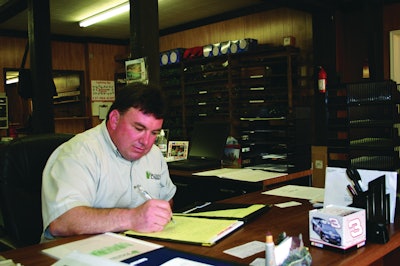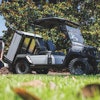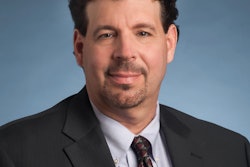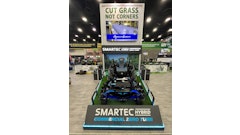
An invaluable tool for small businesses—especially those in seasonal industries like this one—is the cash flow budget. It is different than the normal operating budget, which simply forecasts monthly sales and expenses. The cash flow budget takes those forecasted sales and expenses one step further by also projecting their effect on the cash flowing in and out of your business.
For example, you make a sale in late-July, but the client doesn't actually pay you until the middle of August. Your cash flow budget won't show that income until the middle of August when you actually have a check to deposit into your bank account. Thus, when building a cash flow budget, you need to take into account the average collection time for your credit sales. Certain expenditures may also be treated in a similar fashion. For instance, if you purchase some materials but don't need to pay the bill for 30 days, you'll work that expenditure into your cash flow accordingly, as opposed to the day you take delivery.
The point is that a cash flow budget allows you to maintain a better handle on your cash availability, and in turn, your ability to pay bills and finance your business. A cash flow budget will also help you identify points in the year where, perhaps, you'll need to tap into a line of credit, cut costs or find new income streams.
How this affects landscapers and dealers
"Many landscape companies that have failed were actually profitable at the time they were shut down," points out Rod Bailey, a business management consultant and former landscape contractor. "The need to support a growing list of receivables while you continue covering your payroll and current payables requires that you monitor and plan for cash flow on an annual, monthly, weekly and even daily basis."
Bailey says he and his controller worked out a cash flow projection every year based on their operating budget. "We set it up for projecting our cash position on the 15th and 30th of every month. You know the drill; invoices go out on the 30th, 25% of the money is collected by the 15th, 55% by the 30th, and the remaining 20% drags into the next month. By focusing on them, though, we got our outstanding receivables down to an average of 24 days.
"Now as a consultant, I actually have a landscape contractor client who used to have payables at 15 days and receivables out to 45," Bailey continues. "I told him he had it backwards and needed to go to work on collecting his money sooner, and then paying it out later. When he got receivables to 28 days and payables to 45, his company was able to pay off over $250,000 on their line of credit. Now that's having fun in business!"
“Most dealers do the majority of their sales over the course of just a few months out of the year," says dealership management consultant Jay Gaskins, a former dealer himself. "Dealers need to understand when those sales are occurring, how cash is flowing into the business, how profit dollars are accumulating, when inventory floorplan bills are coming due, and so on. Without a solid cash flow budget and management process, it can become very difficult for dealers to get through those months of the year when sales start to taper off.”
Gaskins says cash in general should be foremost in the minds of equipment dealers. "As a business owner, you have to discipline yourself to fight for as much cash as you can—whether that be fighting for sales margins which directly affect cash flow, sticking to your guns on trade-ins which can tie up cash if you don't turn the trade quickly enough, or simply fighting the desire to purchase a new gadget for the shop.
"Last but not least, when it comes to booking new equipment and/or parts, I like being extremely conservative," Gaskins continues. "For example, if I have 12-month interest-free terms on equipment, I may book what I think I can sell in six months rather than 12, giving myself plenty of margin for error. Depending on the time of the year and current inventory levels, I may reduce that projection to three months in order to protect myself against having to pay interest or depleting cash on a unit that isn't sold. In my opinion, the days of the dealer being a 'warehouse' for manufacturers are long gone, and it's time to be lean and mean encouraging strong cash flow and quick inventory turns."
How to get started building a cash flow budget
If financial management isn't your cup of tea, you'll want to enlist the help of your accountant or a business consultant to build a cash flow budget.
You'll also want to think about how far into the future you go. Some small business advisors recommend going six months at a time, as opposed to an entire year. That's likely far enough in advance to help you make sound predictions and react to certain situations. Solicit the opinion of your accountant before making a final decision. Then monitor cash flow, as Bailey recommends, on a month, weekly and even daily basis.
Identify your current bank balance at the start of the year (or period). This is the figure you're ultimately going to be watching month to month as you operate your business and cash flows in and out of it.
Next, you want to put a sales forecast together—no different than during the normal budgeting process. Then, look at those projected sales and determine when they'll actually result in bank deposits. In other words, how many of those sales do you expect to be cash vs. credit, and how long do you think it will take to collect on those credit sales? Use history as your guide in analyzing this.
Next, do the same thing with all of your direct and overhead costs, including labor, materials, rent, insurance, utilities, advertising, etc. This process should be fairly straightforward and similar to the normal operating budget process, with the exception of those expenditures you pay on, say, 30-day terms, for example.
Another thing to add to your cash flow budget is any kind of capital expenditure (outflow) you make throughout the year—such as paying cash for a truck, computer or piece of equipment—along with any bank loans you take on at different parts of the year (inflow).
Note that, down the road, you'll begin paying those bank loans back. Thus, they will eventually show up in your monthly expenditures. But they do need to show up, because they are going to have an effect on your cash flow at some point. And that's the whole point of a cash flow budget in general: Identify the factors influencing the cash flowing in and out of your business, and maintain a good handle on them from the very beginning of the year—all the way to the end.




















